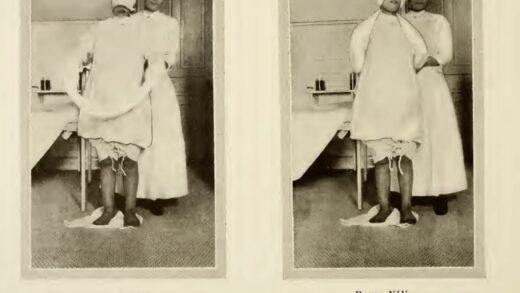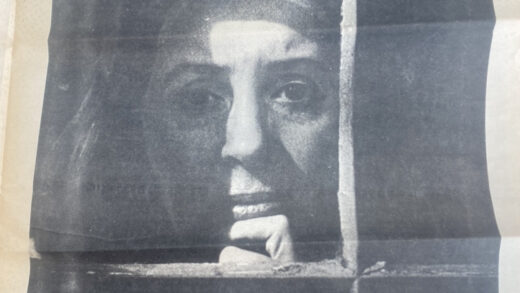by Mihika Johri

Faith in Action: How Religious Leaders Fought for Abortion Access Before Roe v. Wade uncovers the surprising history of the Clergy Consultation Service on Abortion (CCS), a group of ministers and rabbis who helped women access safe abortions in the pre-Roe era. I explore how faith, once a driving force for reproductive rights, became a tool of compassion and resistance against restrictive abortion laws. Featuring the story of Smith College’s very own Reverend Richard Unsworth, this episode challenges the modern association of religion solely with anti-abortion movements, highlighting a forgotten legacy of religious activism for choice.
Transcript
Hello, and welcome to Faith in Action: How Religious Leaders Fought for Abortion Access Before Roe v. Wade. Today, we’re diving into a surprising and often overlooked chapter of American history: the role of religious leaders in providing abortion access before Roe v. Wade. In today’s climate, religion is often synonymous with the pro-life movement, but this wasn’t always the case. In fact, during the 1960s and early 70s, clergy members were at the forefront of helping women secure safe abortions when the procedure was illegal across most of the United States.
The Clergy Consultation Service on Abortion, or CCS, was founded in 1967 by Reverend Howard Moody of Judson Memorial Church in New York City. It was a network of Protestant ministers and Jewish rabbis who recognized the desperate need for safe abortion access. The idea was radical at the time: rather than condemning women who sought abortions, these religious leaders chose to offer compassion and support. They understood that their faith called them to help those in need rather than judge them for their choices.
The work of CCS was groundbreaking. They set up a hotline that women could call to receive counseling and safe referrals for abortion services. By the time Roe v. Wade was decided in 1973, the CCS had already counseled and referred hundreds of thousands of women. The network ensured that these women avoided the dangerous, often life-threatening illegal abortions that were prevalent at the time. According to To Offer Compassion1 by Doris Andrea Dirks and Patricia A. Relf, many clergy involved in the CCS felt a moral imperative to protect the “sanctity of the pastoral counseling relationship,” a principle rooted in their religious duty to care for their community.
One of the key figures in this movement was Reverend Richard Unsworth, a chaplain at our very own Smith College. Unsworth, like many others in the CCS, viewed his role as one of service and compassion. According to David Cline’s Creating Choice: A Community Responds to the Need for Abortion and Birth Control, 1961-19732, Unsworth believed that religious duty involved providing safe, non-judgemental support to women facing the trauma of an unwanted pregnancy. He, along with many other members of the CCS, saw their work as a direct challenge to laws they felt were unjust and harmful.
You might be wondering why religious leaders would get involved in something so controversial. In the 1960s, the broader social context was critical. The civil rights movement and the growing feminist movement were challenging long standing norms. Religious leaders were already engaged in activism for racial justice and peace; for them, helping women access safe abortions was a continuation of their social justice work. They saw the criminalization of abortion as an issue that disproportionately affected poor women and women of color, highlighting a gap between religious teachings of compassion and the harsh reality many women faced.
As explained in To Offer Compassion, these clergy were guided by various religious teachings that emphasized care for one’s neighbors and compassion for those in need. For instance, Leviticus 19:16 warns, “Do not stand idly by the blood of your neighbor,” a verse that resonated deeply with those who witnessed the consequences of unsafe, illegal abortions. Many of the clergy involved in CCS felt that their faith required them to act against these laws, even at the risk of legal consequences.
The CCS’s work was risky. They operated under constant fear of legal repercussions. In some states, merely providing information about abortion was considered a crime. Nonetheless, the clergy involved believed in what they were doing. They navigated these legal obstacles carefully. The service had strict guidelines to avoid direct involvement in arranging abortions; instead, they provided information and referrals, relying on a network of trusted doctors. This approach was strategic – by maintaining a distance between the clergy and the medical procedure itself, they sought to protect themselves from legal prosecution.
Reverend Unsworth’s participation was notable because it illustrates the broad, often unseen support for women’s abortion rights within religious communities at the time. As Cline details in Creating Choice, Unsworth’s commitment to reproductive justice was rooted in his broader vision of social justice. He believed that access to safe abortion was not just a medical necessity but a fundamental human right. His work at Smith College and beyond was part of a larger, coordinated effort by the CCS to bring the issue of reproductive rights into public discourse, challenging the perception that all religious individuals were against abortion.
It’s fascinating to look back at this moment in history. The narrative around religion and abortion has shifted dramatically since the 1970s, influenced heavily by the rise of the Religious Right. Today, it’s almost unheard of for clergy to openly support abortion access, but the legacy of the CCS reminds us that there was a time when religious leaders were among the most vocal advocates for a woman’s right to choose. This history challenges us to reconsider our assumptions about the relationship between religion and reproductive rights. The work of people like Reverend Moody, Arlene Carmen, and Richard Unsworth was driven by a deep sense of compassion and a belief in the sanctity of personal choice. Their legacy is a powerful reminder of the potential for faith to support rather than hinder social justice movements. Thank you for joining me on this exploration of a hidden chapter in the fight for reproductive rights. The story of the Clergy Consultation Service on Abortion reminds us that the relationship between religion and social issues has never been one-dimensional. Decades before Roe v. Wade, religious leaders like Reverend Richard Unsworth were risking their reputations to offer compassion and advocate for justice, showing us a different side of faith – one driven by empathy and a commitment to helping those in need. As we navigate the ongoing debates around reproductive rights today, reflecting on this history offers valuable lessons about the potential for faith to align with, rather than oppose, the struggle for choice. Thanks for listening, and until next time, let’s keep questioning and learning.



References
- Swift, Jayne. 2022. “The Religious Network That Made Abortion Safe When It Was Illegal.” Gender Policy Report. August 17, 2022.
- Doris Andrea Dirks, and Patricia A. Relf. 2017. To Offer Compassion. The University of Wisconsin Press.
- Andrews, Becca. 2022. “How an Underground Network of Ministers and Rabbis Helped Women Get Abortions Before Roe.” The New Republic. October 3, 2022.
- Leviticus 19:1
- Randall Balmer. 2014. “The Real Origins of the Religious Right.” POLITICO Magazine. May, 27, 2014.
- Cline, David P. 2006. Creating Choice: A Community Responds to the Need for Abortion and Birth Control, 1961-1973. New York: Palgrave Macmillan.
- jasonlee3071. 2024. “Church Bells | Royalty-Free Music.” Pixabay.com. March 6, 2024. https://pixabay.com/sound-effects/church-bells-194653/.
- Andrew, Langdon. 2019. “Waiting.” YouTube. November 2019. https://www.youtube.com/audiolibrary.
- The Tides. 2020. “Dream Escape.” YouTube. May 2020. https://www.youtube.com/audiolibrary.
- Zamazan. 2024. “Pages Turning.” Freesound.org. 2024. https://freesound.org/people/Zamazan/sounds/408312/.
- McCammon, Sarah. “< 50 Years Ago, A Network of Clergy Helped Women Seeking Abortion.” npr, May 19, 2017, 3:44.
- Planned Parenthood. 2016. “1967: The Clergy Consultation Service on Abortion Is Launched.” YouTube. October 14, 2016. https://youtu.be/-ieFOi19wfo?si=kfVJAmybB3QbeOSg.
- Frank, Gillian. 2017. “The Surprising Role of Clergy in the Abortion Fight before Roe v. Wade.” TIME. May 2, 2017. https://time.com/4758285/clergy-consultation-abortion/.
- Layne, Bettye, and Schlesinger Library, Harvard Radcliffe Library. 1977. At the International Women’s Year Conference in Houston in 1977, Attendees Hold Clashing Signs on Abortion Rights. The Harvard Gazette.
- The New York Times Archive. 1967. Clergymen Offer Abortion Advice. The New York Times.
- Eisenstaedt, Alfred. 1970. Allen Hinand and Ronald Lutz. TIME.
- John, Orris. 1961. The Rev. Howard R. Moody of the Judson Memorial Church, in Greenwich Village, in 1961. The New York Times.


